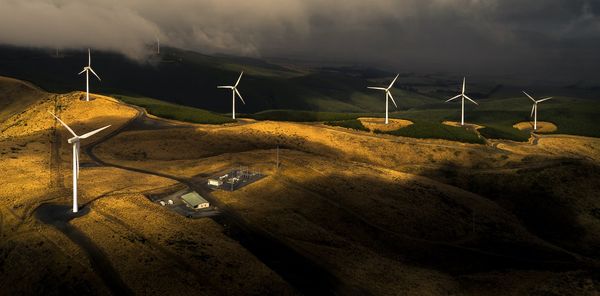
Labour rules out North Island pumped hydro, and slow-pedals contentious South Island Lake Onslow Battery Project in face of National opposition.
Uncertainty over the building of the country’s biggest hydro scheme is set to continue for residents of the Teviot Valley at least until October’s general election.
Cabinet said on Wednesday investigations will continue into both the Lake Onslow pumped-hydro project and a “portfolio” approach to electricity generation including geothermal and biomass for meeting New Zealand’s future energy needs.
READ MORE: * Lake Onslow and the politics of power * No Lake Onslow pumped hydro before late 2037
Minister of Energy and Resources Megan Woods says Cabinet has agreed the strategic and economic details of both should be scrutinised before a decision is made mid-next year on which option to pursue.
A North Island pumped-hydro project and investment in green hydrogen as “dry year” solutions have been dropped.
The further work could soak up $69 million of the project’s total $100 million feasibility budget. Over $20 million has been spent investigating the Onslow option already, the Ministry of Business, Innovation and Employment says.
Construction of the scheme or the alternative projects could begin in 2027 or 2028.
The pumped-hydro scheme would involve extending an existing man-made lake high in hills above Roxburgh in Central Otago.
A dam and underground power station would be built with water piped from a small reservoir alongside the Clutha Mata-Au River.
Model project
The energy storage provided by the scheme would solve the country’s looming shortages and not break the bank at the current estimated build cost of about $15 billion, studies suggest.
In a modelling exercise commissioned by the Parliamentary Commissioner for the Environment, the Onslow option was found to be the best bet of four possible energy solutions.
The exercise didn’t go into environmental effects but included energy generation and development continuing as is, closing the Tiwai Point aluminium smelter or investing in hydrogen production.
The modelling by Energy Link concluded that while Onslow would take the best part of a decade to be operational, it could eliminate fluctuations in the country’s electricity supply and prices including during seasonal ups and downs.
“Onslow effectively smooths out market volatility … it would effectively avoid the construction of more expensive flexible generators and cause existing flexible generators such as fossil gas-peakers to exit the electricity market sooner.”
In his notes on the modelling exercise, commissioner Simon Upton says there are three ways the country can meet future energy demand in a world without fossil-fuel generation.
These are overbuilding renewable capacity to compensate for intermittency in weather, incentivising consumers to reduce their demand particularly at peak times and seeking to store renewable energy harvested at times when it is plentiful.
He says fully understanding the costs, benefits and risks of all the options is essential if New Zealand is to achieve a sustainable transition to a zero-emissions generation system.
“Claims that Onslow, for instance, would be ‘a white elephant’ or ‘unaffordable’ are not a substitute for serious analysis.
“In putting its energy strategy to bed, the Government should commit to a process that enables industry participants, the consulting and academic sectors and the wider public to test the claims being made that key investment decisions made with either regulatory or fiscal support are indeed ‘for the long-term benefit of consumers’.”
Blow-out prediction
National Party energy and resources spokesperson Stuart Smith told Newsroom last month that based on academic studies he thinks the Onslow project would probably overrun its build schedule and budget.
A National-led government would not pursue the scheme, Smith says. Its focus would instead be on reducing regulatory red tape – and therefore costs – for those wanting to build renewable assets.
Investing millions in continuing to build renewable-energy generators, which would ensure some type of supply when sun and wind were intermittent, is not always an attractive commercial prospect as returns could be equally intermittent.
Made with the support of the Public Interest Journalism Fund











